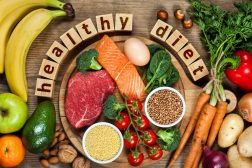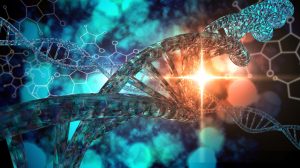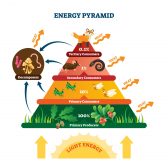Homeostatic Mechanisms and Cellular Communication

In this diagram, hormones bind to the receptors on the plasma membrane. Binding to the receptors activates a second messenger inside the cell.
Table of Contents
Homeostasis is the relatively stable conditions of the internal environment that result from compensatory regulatory responses performed by homeostatic control systems. The setpoint of a single variable is frequently controlled by multiple systems. Such redundancy allows fine-tuning.
Steady-state is the state of a system at which a particular variable remains constant by a continuous input of energy (unlike an equilibrium state) and the steady-state of this variable is called the set point.
In the face of a continuing perturbation, homeostatic responses do not return the regulated variable completely to its original value and this difference is called the error signal. It serves as a signal to maintain the homeostatic response. More precise the homeostatic mechanisms are, smaller is the error signal required to drive the system and lower is the fluctuation in the set point of the variable.
A negative feedback system is one in which an increase or decrease in the variable being regulated brings about responses that move the variable in the direction opposite to the direction of the change.
A positive feedback system is one in which a disturbance sets off a chain of events that increase the disturbance even further. Such a system displaces a system away from its normal set point. Such resetting may be adaptive and could be a part of the body’s defenses. Setpoints may also change on a rhythmical basis.
Feedforward regulation anticipates changes in a variable, improves the speed of homeostatic response and minimizes the amount of deviation from the set point. Such regulation muse external detectors or learning
Components of Homeostatic Control Systems
Reflexes
A reflex is a specific, involuntary, unpremeditated response to a particular stimulus. A stimulus is a detectable change in the internal or external environment. The pathway meditating a reflex is called a reflex arc. A receptor detects the stimulus and produces a signal that is relayed through a pathway called the afferent pathway to the integrating center, which receives signals from many receptors. The output of the integrating center reflects the net effect of the total afferent input. The output is sent through a pathway called the efferent pathway to an effector, the activity of which constitutes the response of the system.
Local homeostatic responses
A homeostatic response, the entire sequence of which occurs only in the area of the stimulus, providing the body with mechanisms for local self-regulation.
Intercellular chemical messengers
Three types.
- A hormone that enables the hormone-secreting cell to communicate with the cell acted upon by it, the target cell, with blood acting as the delivery medium
- A neurotransmitter that is released by a nerve cell and diffuses through the extracellular fluid to act upon a second nerve cell or an effector cell
- A paracrine/autocrine agent that participates in local communication between cells. They do not enter the bloodstream and may be released as a result of stimuli resulting from local chemical changes or neurotransmitters and hormones.
Paracrine agents are synthesized by cells and are released into extracellular fluid upon receipt of an appropriate stimulus. They diffuse to neighboring cells, some of which are their target cells. Autocrine agents are local chemical messengers that are released into the extracellular fluid and act upon the same cells that secreted them. The same chemical may act as any of the three types of chemical messengers. Example: Eicosanoids, prostaglandins, thromboxanes.
Processes Related to Homeostasis
Acclimatization
Acclimatization is the improved functioning of an existing homeostatic mechanism in response to particular stress. If it does not involve any genetic change and is completely reversible, it is also physiological acclimatization while one that is induced during the critical development period of a structure or function may be irreversible and is called developmental acclimatization.
Biological rhythms
Feedforward systems operate without detectors. They activate homeostatic mechanisms and anticipate when a change is likely to occur. The rhythms are internally driven but entrained (timing is set) by environmental cues. These cues can also phase-shift (reset the timing) a rhythm. In the absence of cues, rhythm free-runs and shows a different periodicity.
A circadian rhythm is one that cycles every 24 hours. The suprachiasmatic nucleus in the brain and the pineal gland, which secretes melatonin, are the principal pacemakers (time clocks) of circadian rhythms.
Apoptosis
Apoptosis is the ability of cells to self-destruct by autodigestion with endogenous enzymes. The plasma membrane is kept intact and digested contents are not released, instead, phagocytic cells engulf the whole cell. Apoptosis eliminates undesirable cells. Cells are prevented from self-destruction by chemical signals. Abnormal inhibition of such signals may lead to cancer, while a very high rate of apoptosis leads to degenerative diseases, e.g., osteoporosis.
Aging
Loss in the capacity of (1) homeostatic control systems to respond to environmental changes and (2) cells to divide. Genes have a role in aging evidenced by diseases, e.g., Werner’s syndrome – premature aging due to mutation of a single gene.
Balance in the Homeostasis of Chemicals
Many homeostatic systems work to add and remove different chemicals in the body such that a constant pool is available for different metabolic pathways. Total body balance and the pool concentration of a chemical is determined by:
- Addition of a substance to the pool from (a) gastrointestinal tract or lungs, (b) synthesized within the body or (c) released from storage deposits
- Removal of a substance from the pool through (a) loss in urine, feces, expired air, body surface, etc. and (b) accumulation in storage deposits.
Three possible states of boy balance are:
- If loss > gain and the total amount of a molecule in the body decreases, it is called a negative balance
- If gain > loss and the total amount of a molecule in the body increases, it is called a positive balance
- If gain = loss and the total amount of a molecule in the body is constant, it is called stable balance.
Chemical Control of Cells
Receptors
Receptors are glycoproteins that bind specific messengers. Present on plasma membranes of target cells. The binding initiates events leading to the response of the cell. The same receptor-messenger combination may produce different responses in different cell types. A single cell may contain different receptors that upon binding with a messenger lead to different responses.
Antagonists are drugs that compete with messengers for the receptors and slow down the response of the cell. Agonists are drugs that combine with the receptor and mimic the messenger to increase the response of the cell.
Regulation of receptors
The affinity of some receptors increases in the absence of messengers, increasing responsiveness of the cell to the messenger. This is called up-regulation. Down- and up-regulation is made possible by continuous synthesis and degradation of receptors. Binding of a messenger to a receptor can take the messenger-receptor complex inside the cell via endocytosis. Similarly, receptors can be synthesized inside the cell and made available to the plasma membrane.
Signal Transduction Pathways
A combination of messenger with a receptor causes a change in conformation of the receptor, an event called receptor activation. This can lead to changes in (1) permeability, transport properties, or electrical state of the plasma membrane, (2) metabolism of the cell, (3) secretory activity of the cell, (4) rate of proliferation and differentiation of the cell and (5) contractile activity of the cell.
Mechanisms by which receptor activation leads to the final response of the cell are called signal transduction pathways. The different types of pathways are:
- Pathways with Intracellular Receptors
- Pathways with extracellular receptors
- Receptors that function as ion channels
- Receptors that -function as enzymes
- Receptors that interact with cytoplasmic JAK proteins
- Receptors that interact with G proteins
- Receptors that act as transcription factors
If there are two chemical messengers involved in the signal transduction pathway, the one that binds to a specific receptor on the plasma membrane is called the first messenger and the one that is enzymatically generated as a result of receptor activation and enters the cytoplasm is called the second messenger. Ca2+ frequently acts as a second messenger.
The transduction pathways stop when the concentration of the first messenger decreases due to its metabolism and diffusion. Receptors either become chemically altered, decreasing their affinity for the first messenger or they are removed when the messenger-receptor complex is taken up inside the cell by endocytosis.
You will also like...

A Balanced Diet – Minerals and Proteins
Proteins and minerals can be derived from various dietary sources. They are essential for the proper growth and developm..

Protein Activity and Cellular Metabolism
Proteins have a crucial role in various biological activities. Get to know how proteins are able to perform as enzymes, ..

Evolution of Life – Ancient Earth
Autotrophs flourished, absorbing carbon and light. Soon after, primitive life forms that could assimilate oxygen thrived..

Freshwater Community Energy Relationships – Producers & Consumers
This tutorial looks at the relationship between organisms. It also explores how energy is passed on in the food chain an..

Running Water Freshwater Community Factors
This tutorial noted some of the physical and chemical factors that provide the framework of a running water community in..

Muscle
Muscle cells are specialized to generate force and movement. Learn about the different types of muscle tissues in this t..
